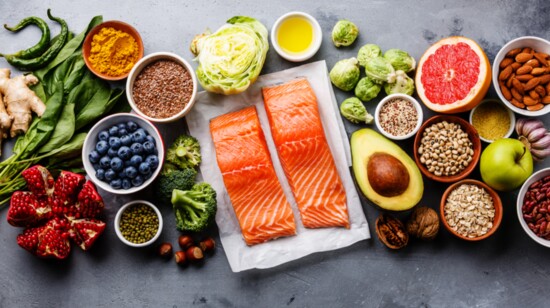Do you know how much you're really eating? Sometimes it’s hard to tell if the portions we consume are the right serving size for our nutritional needs. Portion sizes have increased drastically over the years, contributing to a rising obesity rate.
Sometimes portion size and serving size are the same, but sometimes they are not. Over the past few years, portions have grown significantly in restaurants, as has the frequency of Americans eating out.
Consider this statistic from the American Heart Association and the Robert Woods Johnson Foundation study “A Nation at Risk: Obesity in the United States”: Adults today consume an average of 300 more calories per day than they did in 1985.
Understanding healthy portions can be hard. Here’s why:
- Many of us don’t know what a healthy portion is.
- Restaurants offer extras like breads, chips and other appetizers that add extra calories, sodium and fat but lack any nutritional benefit.
- Some meals have portions that are enough for two or more people.
- Many convenience foods and drinks are priced lower but packaged in larger sizes to sell more.
Understanding the difference between a portion and a serving makes it easier to determine how much to serve during a meal. According to the National Institutes of Health:
- Portion is how much food you choose to eat at one time, whether in a restaurant, from a package or in your own kitchen. A portion is 100 percent under our control. Many foods that come as a single portion actually contain multiple servings.
- Serving Size is the amount of food listed on a product’s Nutrition Facts label. All the nutritional values you see on the label are for the serving size the manufacturer suggests on the package – not necessarily for the portion you are consuming.
How can we eat and serve smaller portions?
- When cooking at home: Offer the proper “serving” to each member of the family, then put the extra food away. Save leftovers for another meal.
- When dining out: Skip the appetizers and split a large salad or main dish with a friend.
- When ordering takeout at home: Eat one slice of pizza instead of two and order a small instead of a medium to split among the family so the pieces are smaller.
- Watching movies at home or at the theatre: Don’t eat while watching TV or a movie or when you’re on the computer. It’s harder to control how much you’re eating if you don’t pay attention to what you’re putting in your mouth, and when. Share a box of popcorn, avoid free-refill tubs and skip the candy.
- At snack time: Never eat straight from the bag or box. Measure out snacks, including fruits and veggies, into appropriate portion sizes before consuming.
- All the time: Using a food diary or food tracking app can help you pay closer attention to what you're eating, how much and how often, especially if you dine out frequently. It helps to know what the appropriate serving size is so you can correctly estimate the calories in your portions.
You may be surprised to learn these are serving sizes:
- 1 slice of bread
- ½ cup rice or pasta (cooked)
- 1 small piece of fruit (super-large apples are 2+ servings)
- 1 wedge of melon
- ¾ cup fruit juice
- 1 cup milk or yogurt
- 2 oz. cheese (about the size of a domino)
- 2-3 oz. meat, poultry or fish (this is about the size of a deck of cards)
Learn more healthy eating tips at Heart.org/HealthyLiving




